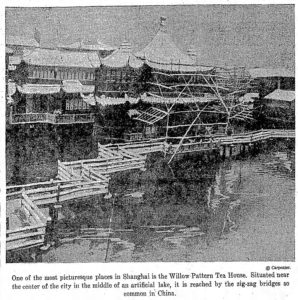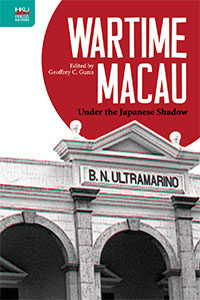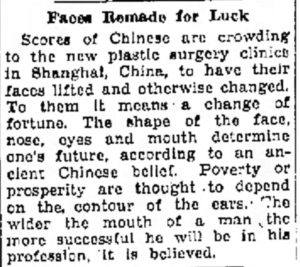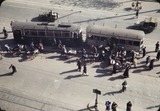Posted: December 3rd, 2016 | No Comments »

“Devils on the Doorstep(鬼åæ¥äº†)”a 2000 black comedy directed by Jiang Wen, will be preceded by remarks by Matthew Hu Xinyu. You may know that the movie, set in the waning days of WWII, sparked heated discussion because it underscores common human traits of both Japanese and Chinese. But did you know its most memorable scenes were filmed not far from Beijing in Hebei province? Before the film, Matthew Hu Xinyu, one of Beijing’s top cultural-preservation experts, will identify important examples of ancient Chinese architecture shown in the film.
WHAT: “Devils on the Doorstep” film showing, preceded by remarks by Matthew Hu Xinyu
WHEN: Saturday, Dec. 3 from 6:30 to 9:00 PM
WHERE: The Courtyard Institute, #28 Zhonglao Hutong, Dongcheng District www.courtyardinstitute.com
COST: 30 RMB for RASBJ members; 50 RMB for non-members
RSVP: please email events@rasbj.org and write “Devils” in the subject header
PLEASE NOTE: The black-and-white film, which is 139 minutes long, will be shown in Chinese with English subtitles

Posted: December 2nd, 2016 | No Comments »
aaahhh lovely – no crowds, no tour groups with yellow baseball caps, no Starbucks, no tour guides with megaphones, but with snow in 1924….appears to be a little bit of restoration going on with some bamboo scaffolding up…

Posted: December 1st, 2016 | No Comments »
This collection, Wartime Macau: Under the Japanese Shadow, is most welcomed by me personally as a subject that has long fascinated. I have, in literary non-fiction style, written about the period myself – most recently in the September 2016 issue of Cha, the online literary journal based in Hong Kong with my piece Strangers on the Praia. Anyway, here are the proper academics weighing in on the subject. There’s a lot about Macao’s wartime history that remains secretive and of potential embarrassment to some of Hong Kong and Macao’s biggest families and companies, so I’m sure there’s still more to come out….

It has intrigued many that, unlike Hong Kong, Macau avoided direct Japanese wartime occupation albeit being caught up in the vortex of the wider global conflict. Geoffrey Gunn and an international group of contributors come together in Wartime Macau: Under the Japanese Shadow to investigate how Macau escaped the fate of direct Japanese invasion and occupation. Exploring the broader diplomatic and strategic issues during that era, this volume reveals that the occupation of Macau was not in Japan’s best interest because the Portuguese administration in Macau posed no threat to Japan’s control over the China coast and acted as a listening post to monitor Allied activities.
Drawing upon archival materials in English, Japanese, Portuguese, and other languages, the contributors explain how, under the high duress of Japanese military agencies, the Portuguese administration coped with a tripling of its population and issues such as currency, food supply, disease, and survival. This volume presents contrasting views on wartime governance and shows how the different levels of Macau society survived the war.
Geoffrey C. Gunn is an emeritus professor at Nagasaki University and author of History without Borders: The Making of an Asian World Region, 1000–1800.
“Wartime Macau deals with a fascinating and woefully understudied topic. The essays collected here show that there was no singular experience of World War II in Macau; how one experienced the war depended on a complex calculus of ethnicity, class, and connections. And yet, taken together, these experiences shaped the trajectory of the city’s political and social development for decades to come.â€
—Cathryn H. Clayton, University of Hawai‘i at MÄnoa
“This book represents a real breakthrough. Previous English-language accounts of Macau during the World War II have focused largely on the activities of the British in this neutral ‘Casablanca’. Drawing extensively on Portuguese, Japanese, and local Macanese sources, Geoffrey Gunn and his team have assembled a far broader picture, revealing the dilemmas and choices of Portugal’s beleaguered colonial government and placing Macau in a geopolitical context that stretched from the Azores to Australia.â€
—Philip Snow, author of The Fall of Hong Kong
Posted: November 30th, 2016 | No Comments »
Apologies for being a bit late with this but I just came across the Thanksgiving menu offered by the very well known and highly regarded Shanghai Low restaurant in Reno, Nevada in 1924…

Posted: November 29th, 2016 | No Comments »
Back in 2010 I visited Lin Yutang’s house in Taipei, which is now a museum. I blogged about his Taipei house and noted that ETC Werner’s 1922 classic Myths and Legends of China was on his bookshelf. But, in 2010, I didn’t have a camera phone so I never got a chance to snap it. Recently the excellent writer on matters Chinese Michael Meyer visited the house and he did have a camera phone and got a shot of the book proudly displayed on Lin’s shelves.

Posted: November 28th, 2016 | No Comments »
The other day I came across two stories on plastic surgery in Shanghai. One just dropped on to my phone courtesy of some newsfeed I don’t want but can’t seem to delete. It was the all-too-familiar Shanghainese love plastic surgery story that anyone interested in China for anything longer than a year or two must be bored with. Then, browsing the archives I came across this story from August 1937 on the vogue for plastic surgery in…Shanghai.
Now some years back I co-wrote a book on obesity in contemporary China, Fat China. In that book is a chapter on extreme dieting, gastric banding, supposed slimming pills and plastic surgery, covering everything from eyes, chins and height to liposuction. But in that research I have to admit I never came across anything about mouth widening and wide mouths being linked to career success??? But apparently that, and having the right contour to your ear, was the key to prosperity!!

Posted: November 27th, 2016 | No Comments »
Just to let anyone who might be interested know, if you don’t already, that I am uploading a lot of old China photographs, illustrations and drawings to instagram now at oldshanghaipaul – I usually put a few up a day….

Posted: November 26th, 2016 | No Comments »
That’s Shanghai tells me that there is to be a new tram running the length of Yan’an Road (the old Avenue Edward VII, or the Avenue Eddy) – the former border between the International Settlement and Frenchtown. Great, but nothing new – a tram always ran along the Avenue Eddy.
J.G. Ballard recalled the Avenue Eddy tram in his novel Empire of the Sun as Jim rides through town on his bicycle as the Japanese encirclement of the foreign concessions tightens:
‘Pedaling fiercely, Jim followed a heavily laden tram that clanked along the Avenue Edward VII. Morose Chinese clung to its sides, and a cop-headed youth in a black mandarin suit spat at Jim, then leaped down and ran into the crowd, nervous that even this small act would set off a train of retribution.’
As well as along Avenue Edward VII Route 8 from the Garden Bridge along the Bund and crossing Nanking Road then crossed the Avenue Eddy whereupon any passengers continuing on their journey were required to buy a new ticket for travel in the French Concession. On the image below you can clearly see the tramlines on the Avenue Eddy…

and here’s the tram stop on the Bund, just before the tram turned up the Avenue Eddy…










